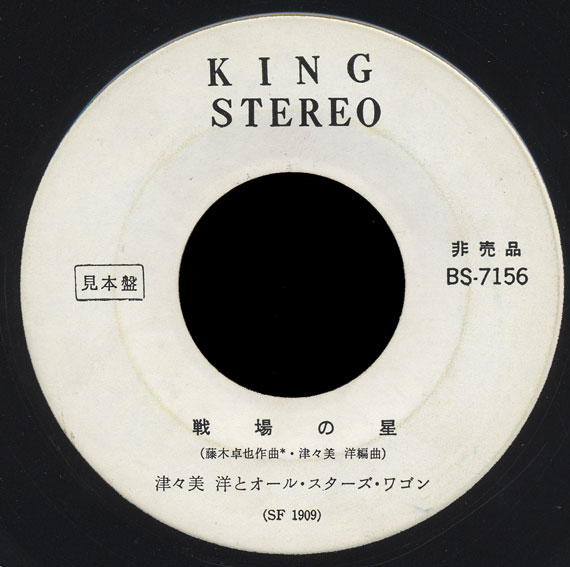
These are unusual instrumentals with surf influences, titled “Mirage” and “Senjō no Hoshi (Stars Above the Battlefield)”.
Thanks to Bård’s research, I can identify this as Tsutsumi Hiroshi and All Stars Wagon.
 Long Branch, New Jersey’s Inmates won a battle of the bands in 1966, leading to just one 45 on Columbia, the horrible novelty song “Local Town Drunk”. Columbia should have promoted the b-side instead, “You Tell Lies”, written by guitarist Ron Flannery.
Long Branch, New Jersey’s Inmates won a battle of the bands in 1966, leading to just one 45 on Columbia, the horrible novelty song “Local Town Drunk”. Columbia should have promoted the b-side instead, “You Tell Lies”, written by guitarist Ron Flannery.
A few unreleased numbers turned up later on. There’s a psychedelic edge to “Fakirs & Thieves” and “More Than I Have”, unlike the clean garage sound of “You Tell Lies”.
The other members of the band were Bobby Nolan lead vocals, Gordon Rhoades, Al Aschettino on bass, and Sammy Falvo on drums.
I recently received photos of an acetate credited to the Electric Carnival with “Fakirs and Thieves” and “More Than I Have”. Tommy Falcone is listed as producer. Thanks Joe for sending this in.
Anyone have a photo of the group?
Great band from Florence with two 45s. Other than that, I don’t know a thing about them. They have a real garage sound, with no attempts at ‘pop’. Unlike most other Italian bands, they sang all their songs in English, with a good accent at that!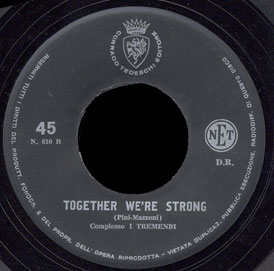
Their first 45 has “Where’s My Baby” (written by Ursillo-Iandelli) on the top side, with the even better “Together We’re Strong” (written by Pini-Mazoni) on the flip.
Both sides of the second are also good, the uptempo “If You Don’t Come Around” and the ballad “I Knew I’d Get You”.
Anyone have a photo of the group?
Italian releases from this time usually have picture sleeves, but it’s my understanding that 45s on the NET label never do.
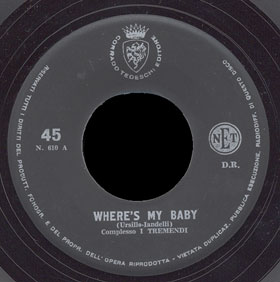
“That’s the Sun” is a fine garage song with a touch of psych. All copies of the record suffer from a warble in the tape created in recording or mastering. 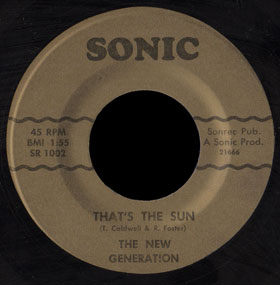
From Spartanburg, South Carolina, the New Generation had Tommy Caldwell on bass and Doug Gray on vocals – these two would soon become part of the Marshall Tucker Band. Other members were Randy Foster on rhythm guitar, Ross Hannah on drums, Dan Powell on organ, and Keith Wood on lead guitar.
Anyone have a photo of the group?
“That’s The Sun” was written by Tommy Caldwell and Randy Foster. The flip side is a conventional pop song called “Because of Love (It’s All Over)”. Released April of 1968 on the Sonic label.
I’ve read they had one other 45, but I think that may be a mistake. They were not the same New Generation with a 45 on Kapp, “If You’re Lookin’ for Love” / “Never Let the Right Hand Know (What the Left Hand’s Doin'”.
I wonder how many Beatles fans this one confused? If they dropped the needle on the record before purchasing, the answer would be zero, I’m sure, as this sounds nothing like the Fab Four, and is obviously a very American production.
This was released on a California label, TIP, then picked up by London for release in the UK, unusual for 1965 when records were more likely to be traveling the other direction.
The band delivers a tough sound for “I’m Walkin'” even though it’s not much more than a mediocre love song. “People Say (Love Is Blind)” is of less interest but it still shows the competence of the band and has nice reverb on the guitar.
Who is behind this 45 is definitely a mystery. The songwriting credits for both sides are S. Szigeti and P. Lichterman. The band sounds like more than a studio conglomeration so they were probably a professional group working under an alias just for this release.
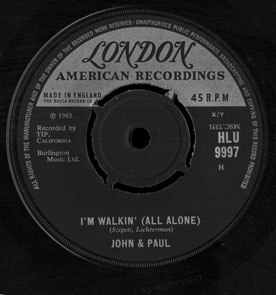
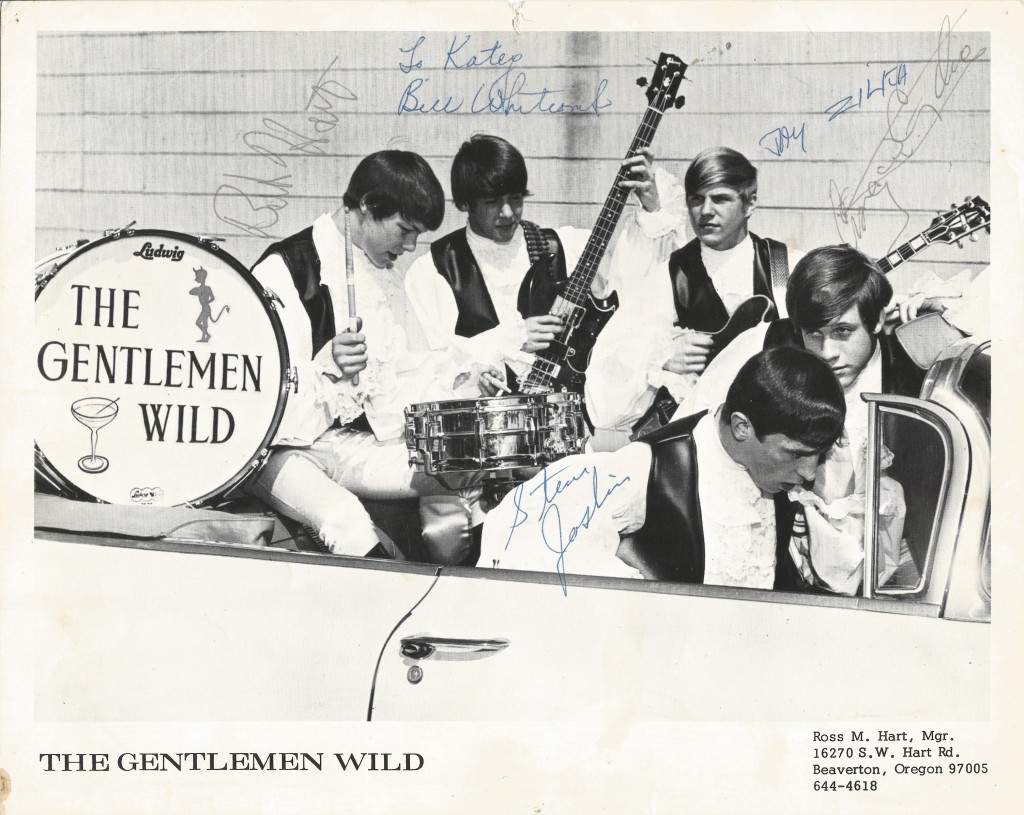 The Gentlemen Wild had a lively career based out of Portland, Oregon starting in 1965. The band went through several personnel changes, but early members include Craig Cathey vocals and keyboards, Jay Zilka lead guitar, Page McCallum keyboards, Bill Whitcomb bass, Tom Phelps guitar and David Vermilya on drums.
The Gentlemen Wild had a lively career based out of Portland, Oregon starting in 1965. The band went through several personnel changes, but early members include Craig Cathey vocals and keyboards, Jay Zilka lead guitar, Page McCallum keyboards, Bill Whitcomb bass, Tom Phelps guitar and David Vermilya on drums.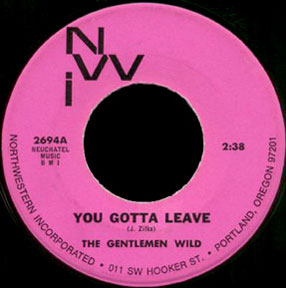
In 1966 Bob Hart joined from the Beaverton group, the Nightraiders, and his father Ross Hart took over management of the band. Both additions immediately improved their prospects, and they became a house band at a teen club in Portland, the Tork Club.
In May of 1967 they won the state Battle of the Bands, enabling them to travel to the Ridge Arena in Braintree, Massachusetts (just outside Boston) to compete nationally. Their version of “Nowhere Man” from that competition is on a rare two record album released at the time. The photo just below is taken from the program for the Battle of the Bands.
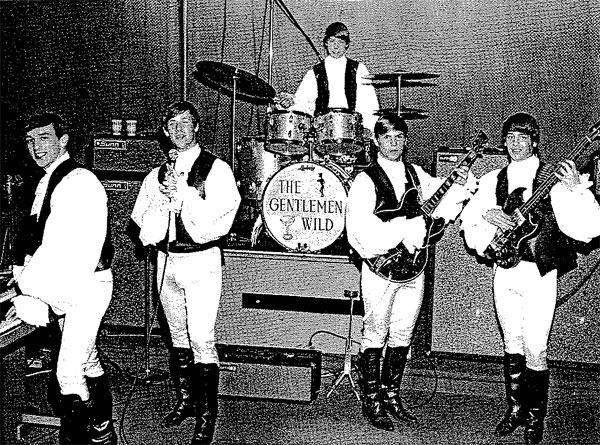
They appeared on local and national television shows, including the Paul Revere & Mark Lindsay hosted show, Happening ’68. In the episode I’ve seen, the Gentlemen Wild lip synch to their version of “Keep On Running”, easily beating out a California band, the Good Friends and Merry Fellows, who did “Heat Wave”. Judges for that show included Bobby Vee and Sal Mineo, who says “have beads will travel” during the introductions! All the photos below are from the Happening ’68 show.
They released just one 45, recorded at the local NWI (Northwestern Incorporated) Studios and pressed on its vanity label. This is a label I’d definitely like to know more about! “You Gotta Leave” became a big hit on the west coast, reaching #2 in Portland. It was written by the guitarist, Jay Zilka.
The flip side, “I Believe”, wasn’t written by any of the band members. It’s not garage, more like the last slow song at a dance, the kind to get you to leave! Other members of the Gentlemen Wild at one time or another included Dave Cookson drums, John Crowe drums, and Steve Joslin keyboards. The band broke up in 1969.
Thanks to Mike for the Gentlemen Wild appearance on Happening ’68, and to Paul for the scan of the Braintree Battle of the Bands program.
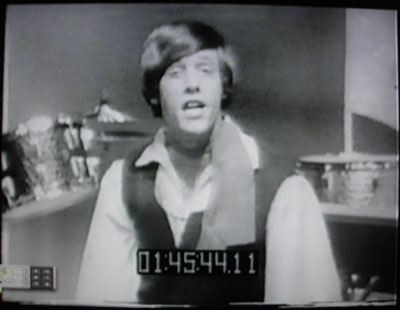
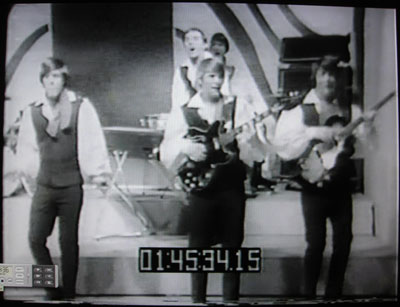
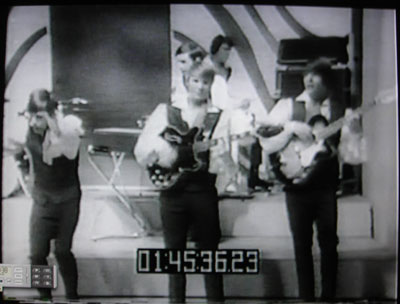

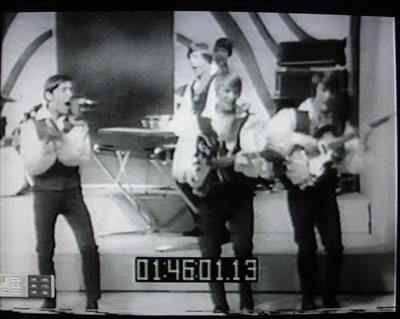
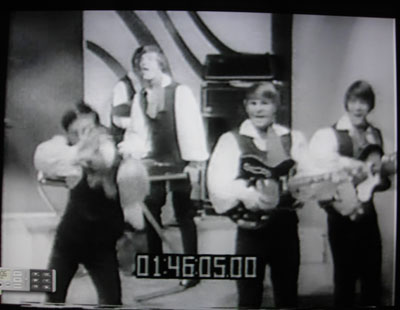
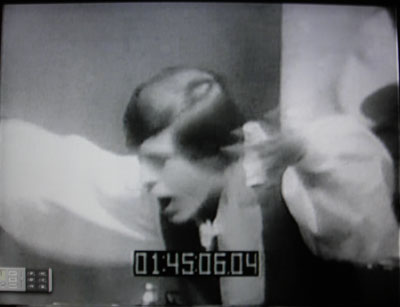
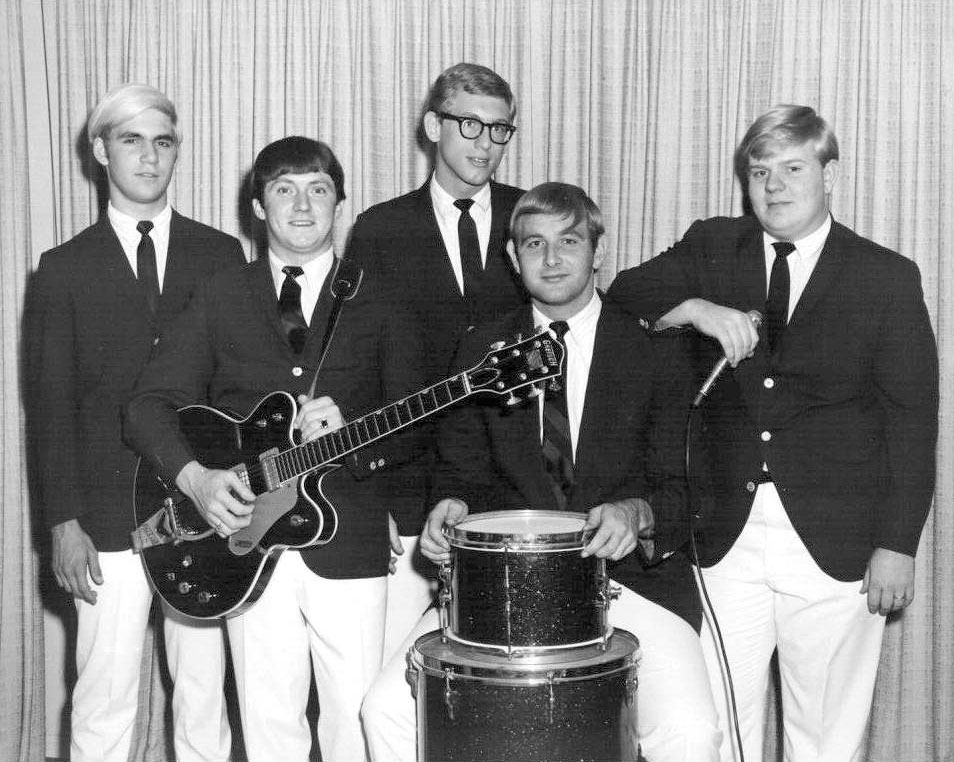
The Villains first 45, “Don’t Ever Leave Me” is a classic, featuring some of the most savage screams in garage music.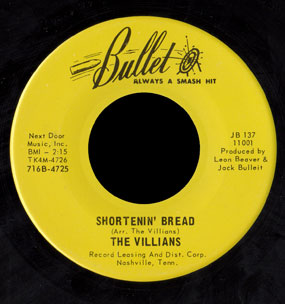
The Villains were long thought to be from Tennessee because their records were on the Bullet label from Nashville, but after hearing from lead guitarist and co-founder Alan Hoover, I can confirm they were from Evansville, Indiana, just 150 miles north of Nashville. Their records were produced by Leon Beaver (a country singer himself) and Jack Bulleit (the son of Jim Bulleit).
Here’s their story as told to me by Alan:
Actually, we spelled Villains correctly (after looking it up!), but many people put the a/i in the wrong order, including the guys at Bullet Records. Jim Bulleit (“pronounced Bullet”) of Nashville was the producer/owner of Bullet. He attempted to revive the label with our record, but I don’t know if he ever did get it going.
Anyway, the folk classic “Shortenin’ Bread” was the “A” side of our first record, not “Don’t Ever Leave Me”. Shortenin’ Bread acheived number one in Evansville, IN, for a good run, and also other towns in the area. We had to play it 2 or 3 times a gig or they wouldn’t let us leave. Really! Don’t Ever Leave Me was also locally popular, but much less so than Shortenin’ Bread. Also, Shortenin’ Bread was a 4-star pick hit in Cashbox Magazine, and (we were told by Bulleit) “broke” in the Tallahassee, Florida market and some other markets. I have also been told by several people over the years that the Bullwinkle cartoon show featured it in an episode, but I have never personally verified that. We actually heard it on an Astronauts (Boulder CO) record as a rock song in ’63, and thought we could improve on it.
Here is some history of the band:
Bob Ledbetter (Led) and I started the Villains in our hometown of Evansville, Indiana, in summer of 1963 (after we graduated from high school), with Roger Walker, a local drummer (we had no bass yet). I was lead guitar, taught Led some rhythm. Led was also our lead singer. We started playing beer parties, dances, etc. I went to college that fall, and Bob met Larry Mattingly (Midget), a local E’ville guitar player who sang good backup. They continued the band during the ’63/’64 school year, adding Bob’s girlfriend Julia Hadad for backup harmony and sex appeal. Still no bass guitar. Then, I quit college, came back in the summer of ’64.
We practiced all day all summer and fall in Bob’s basement, improving our chops. In the fall of ’64, we picked up Steve Hacker, a local bass player. We played loud, solid rock, and crowds were attracted to the atmosphere that we created. Our reputation kept increasing, and we became the top local band. We had lots of fans/friends around the area. We were known for inciting rowdy behavior with our music, particularly if beer was running freely. The “Villains” name fit, although we chose it largly because we were from “the ‘ville”. We were definitely one of the party bands of all time, I’m not exaggerating either. Larry and Led had a natural comedic talent, which added to the showy aspects of the band. (They formed a “Led and Larry” duo for about 10 years after the Villains broke up, also known for inciting rowdiness.)
In ’65, we got a new drummer, Pat Ziemer, from another local band (The Aragons). Also, we picked up Bruce Blythe, a local keyboard player, from the same band. Bruce and my brother Mike Hoover (now a doctor in Evansville) wrote “Don’t Ever Leave Me”. We actually recorded Shortnin’ Bread/Don’t Ever Leave me in late summer of ’65 in Nashville, after Jim Bulleit saw us and liked what we were doing. He personally auditioned us in Evansville, and had us to his house for a cookout immediately after we recorded Shortenin’ Bread etc. He mentioned that he was reviving the label after being out of the business for some years.
It quickly became #1 in E’ville. A local DJ started managing our bookings, and we were playing all over the southern Indiana/Illinois, northern Kentucky area, with Shortenin’ Bread boosting our visibility in the area. We also regularly played fraternity parties in Evansville, IU (Bloomington IN) and Vanderbilt (Nashville), as well as numerous Louisville and Indinapolis gigs. Fraternities always asked us back, for obvious reasons.
Bruce Blythe had other ambitions, and left later in ’65. We picked up Danny Brown, another local keyboard player, to replace Bruce. In ’66, we recorded a Gary Bugg song called “Love is the Treasure”, our second record, and we put “Midnight Hour” on there too (actually the “A” side). Danny and Garry Bugg both came from another Evansville band, The Circles. We recorded that in the basement of a funeral home in Evansville!
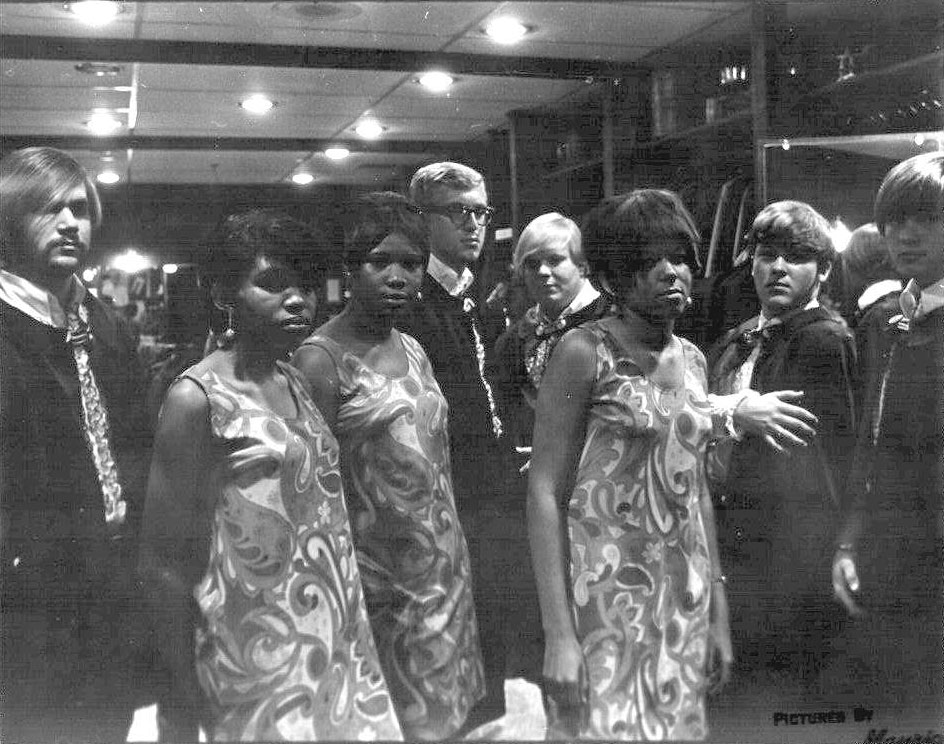
In 1967, a local Supremes tribute group called “The Passions” joined us, as we started playing more and more soul. They were Cynthia Bennett (lead singer), Althea Mitchell, and Sandy King. These girls danced, sang, looked great in short dresses, and the crowds loved them. They liked our white soul, and sat in on a couple gigs. They were sweethearts. Everybody liked them, so we made them part of the band. About that time, we joined Triangle Talent of Louisville, KY, who put us into many venues that we didn’t previously have access to.We pretty much split up in ’67 or ’68, with Larry and me quitting. Led, Dan, a new drummer (Tommy Thompson), and Steve Hacker teamed up with super guitar player Denny Browder (who is said to have refused a membership with Chicago because of fear of flying), along with Cynthia of the Passions and formed a touring band. They might have called themselves The Villains, but no one can recall.
In 1984, we decided to do a 20-year reunion in Evansville, with Led, me, Larry, Pat, Danny, and Steve (our serious party lineup). It went over big, with all the original members showing up to jam. We continued this every year until 1997 with good crowds. The rowdiness would always recur, even though many of the audience were entirely too old to be behaving in such a manner. But, they couldn’t help themselves! Then, Led had a stroke Christmas Eve of 1997 at the young age of 52. The stroke damaged Led’s speech, and he can no longer sing. So, that sadly ended the Villains. He can still make me fall over laughing though, he is such a natural comic.
Everybody went on to have families, etc., some in professional fields. I became an engineer, designed, patented, and now make and sell a guitar invention called the Sustainiac, that produces infinite sustain for guitar. (Sustainiac.com) Larry Mattingly and Pat Ziemer are in sales, Danny Brown a counselor, Roger Walker a hairdresser, Steve Hacker still playing bass I think, Bruce is doing well as a nationally recognized consultant with business on dealing with catastrophic events. Cynthia Bennet became a nurse, but I don’t know about Althea Mitchell or Sandy King. I hope I got all the facts right.
Thank you Alan for your input and the great photos.
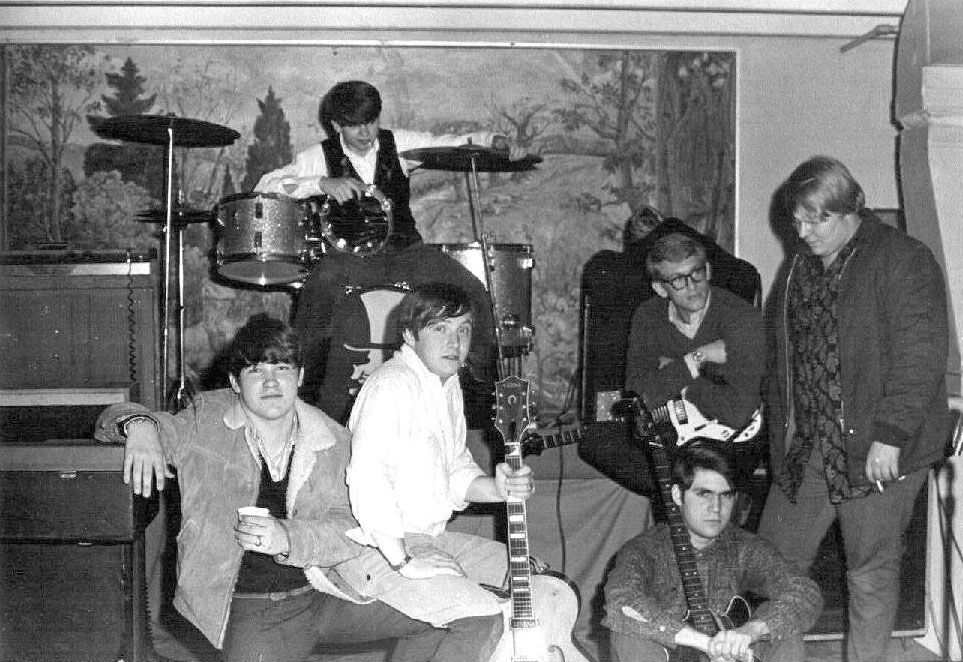

 The Dynamites were Segawa Hiroshi vocals, guitar and leader of the group (that’s him in the chair), Oki Keizo slide guitar (unusual for a Japanese band), Yamaguchi Fujio lead guitar, Yoshida Hiroji bass and vocals, and Nomura Mitsuro (“Tako”) on drums. The ripping guitar and driving rhythm of their best music make them one of the top Japanese garage bands.
The Dynamites were Segawa Hiroshi vocals, guitar and leader of the group (that’s him in the chair), Oki Keizo slide guitar (unusual for a Japanese band), Yamaguchi Fujio lead guitar, Yoshida Hiroji bass and vocals, and Nomura Mitsuro (“Tako”) on drums. The ripping guitar and driving rhythm of their best music make them one of the top Japanese garage bands.
They came out of the Tokyo club scene, calling themselves the Monsters before having to change their name when signed to Victor.
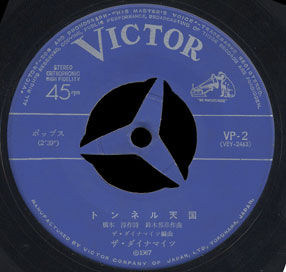 Their first single from November, 1967 (pictured above) contains different versions of two songs that would show up on their album, Young Sound R&B. “Tunnel to Heaven” is a fine number on the 45, but compare it to the LP and what a difference! Much heavier drums and the guitar is forward in the mix instead of the vocals dominating. Both versions have fantastic solos and plenty of shouts and screams.
Their first single from November, 1967 (pictured above) contains different versions of two songs that would show up on their album, Young Sound R&B. “Tunnel to Heaven” is a fine number on the 45, but compare it to the LP and what a difference! Much heavier drums and the guitar is forward in the mix instead of the vocals dominating. Both versions have fantastic solos and plenty of shouts and screams.
The opening chords of “Koi Wa Mo Takusan” (That’s Enough Love), very reminiscent of Paint It Black, segue into a heavy fuzz intro on the LP. On the 45 strings carry the melody instead of the guitar, though once again the solo blazes away. The LP version retains the strings but they’re flat buried in the mix. The song itself is fairly bland and wouldn’t appeal to non-Group Sounds fans, but that opening and the ferocious guitar solo make it worthwhile.
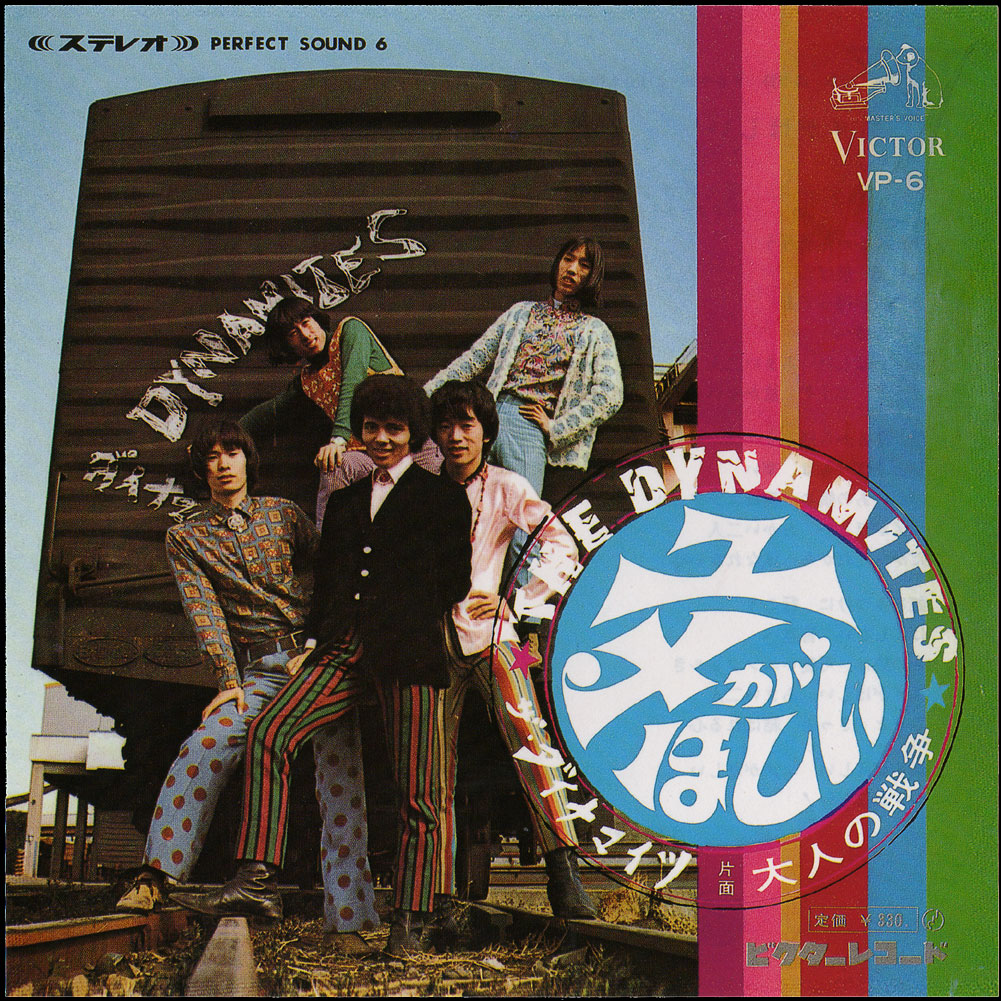
The flip of their second 45 from March of 1968 was “Otona no Senso”, which translates as Adult War, and I don’t really know what that’s supposed to mean. This one repeats the unique Dynamites formula: strings, insistent rhythm, screams and shouts, and plenty of fuzz. Japanese 45s and LPs from this time are in stereo with excellent recording quality; when the music is this good it’s a rare treat.
A clip of the Dynamites performing the A-side of their second 45, “Yume Ga Hoshii” in a movie (not sure which) has been taken down from yutube.
Like most GS bands, their LP is chock full of poorly chosen cover songs like “My Girl” and the Bee Gees’ “Massachusetts”. though there’s also an LP-only original “Nobosecha Ikenai” that’s good. It was released in April of 1968 and was followed by three more singles that I haven’t heard:
“Manatsu No Yoru No Dobutsuen (On Midsummer’s Night)” / “Kegawa Ni Natta Shimauma (The Zebra Who Became Fur)”
“Koi Wa Question (Love Is Question)” / “Sekaiju Ni Hohoemi O (Smile At The Whole World)”
“Bara To Akuma” / “Yume-Demo Lisa”
There’s also a CD Live at the Go Go ACB 1969, which is supposed to be OK, but with poor sound quality. I haven’t heard that either.
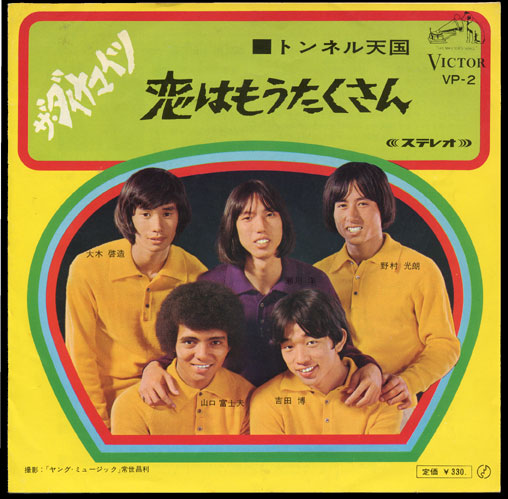
The Landlords from Winchester, MA released one 45 on the Reed label before disappearing.
Erik Lindgren provided the lineup of the band in a comment below:
Roger Millen – lead vocals and harmonica
John Buzzotta – lead guitar
Bill Brusseau – rhythm guitar
Bobby Mouradian – drums
Jimmy Mouradian – bass
Michael Kelley wrote a comment that I’ll reproduce in part here because it’s informative:
The Landlords were from Winchester, MA. Their one single, pictured above, was released by Jolar/Reed Record owner John J. Sullivan in 1967. The Landlords did back up labelmate Jonna Jaye on some live peformances, but not in the studio. However, she did come with her father to the Landlord’s recording session in New York. Jonna’s last release “Detour On A Dead End Street” was backed by the Maine garage band The Barracudas who recorded on Critique, Flair, and Jolar.
“I’ll Return” is a well-crafted love song, lyrically interesting, with tasty guitar reverb. The quality recording lets you hear an experienced, cohesive band that was probably gigging regularly. “I’ll Return” was written by Richard R. Errico. My copy is inscribed “To Pvt. Rossi – Good Luck – Dick Essio”, poignant given the escalation in the Vietnam War going on in 1967 when this was released.
“I’m Through With You” is as weepy as they get, and I wish I could have made a less noisy transfer of it. This side was written by John Buzzottu and Bid Woods.
Anyone have a photo of the group?
Updated January 2010
For every fuzz-driven garage screamer, there are a dozen records like this one by the Checkmates: competent and upbeat but uncompromised pop music. I didn’t know much about the group until people commented and wrote to me, so I’m adding some of the comments into this article.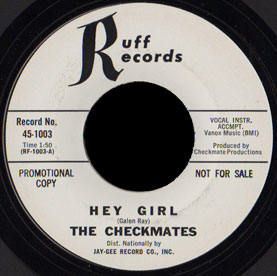
Ray Ruff was an Amarillo impresario, owning the Checkmate night club, a recording studio and Ruff Records. He was also a partner in Sully Records, eventually taking it over from Gene Sullivan, who had started it in Oklahoma City in 1959.
A paragraph from Ruff’s obituary gives some background on his early music career:
Ray Ruff befriended Buddy Holly’s record producer Norman Petty and, after Holly’s death, he made several soundalike recordings, deliberately wearing spectacles like Holly’s when he recorded. Ruff often worked with his group the Checkmates, but they became the Executioners and wore hooded masks on stage.
There are at least eight different 45s by Ruff with the Checkmates, mostly on Norman Records, from between 1959 to the early ’60s.
Bobby Hacker commented below:
I was his first drummer and I recorded several records with the Checkmates under the Norman label. Ray was the vocalist along with Chuck Tharp. Tharp was the original vocalist for the Fireballs. Charles McClure was the lead guitarist, Tharp was rhythm guitarist and Tom Beck was bass guitarist. We toured the mid-west U.S., along with two provinces in western Canada. Most of our recordings were done in Clovis, N.M. at Norman Petty studios. While on the road, we. the Checkmates, recorded in St. Louis, Mo. backing a singer, trumpet player named Gabriel.
The year was 1961 and I am the only living survivor of the original Checkmates mentioned here. Ray Ruff went through several musicians during the 1960’s and he passed away a couple of years ago in L.A. He was very sucessful as a record producer but not that good a singer when I worked with him. He supposedly along with Norman Petty, formed the Checkmates.
Tom McCarty of the Page Boys wrote to me:
Ray Ruff had a recording studio in Amarillo at the Trades Fair shopping center at N.E. 24th and Grand. Ray was a Buddy Holly look-alike/wannabe who toured the mid-west with the Checkmates from Scotts Bluff, Nebraska – Minot, Minnesota, etc. If memory serves me right, The Checkmates had pretty well disbanded by 1966 which is about the time I met Ray Ruff. They were really a good group. Larry Marcum, their lead guitarist, was a good musician and a nice fellow.
Jerry Hodges commented:
I played with Bob and Larry Marcum with the Checkmates. I remember a tour to North Dakota with with Ray Ruff. I think we traveled in a Nash Rambler. I can also remember going into the Norman Petty studio and Larry wanted to play bass, so we switched as I was the bass player.
The band’s lineup had changed considerably since Ruff fronted the group, and by the time of the 45 I’m featuring here the band included Galen Ray (Galen Ray Englebrick) on bass. Galen Ray wrote both sides of this 45. There’s another 45 on Ruff by the Charming Checkmates – Just to Make Me Cry, that I haven’t heard.
Also see the Ruff and Sully discographies I’ve posted here.
Anyone have a photo of the group?